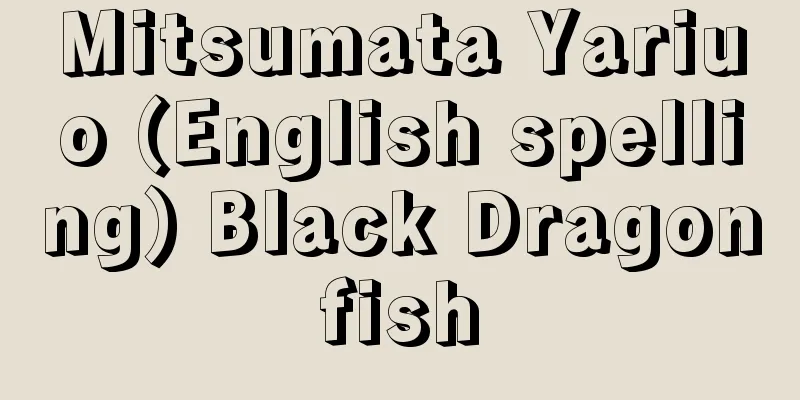Chanko cuisine - Chanko cuisine

|
A unique home-cooked dish found in the sumo world. It is also called chanko nabe. In the sumo world, wrestlers belong to stables bearing elder names, where they train their apprentices. The food served in their lodgings is called chanko cuisine, and is often served at lunchtime (wrestlers skip breakfast). The name is said to come from the fact that the chef was called "chan," or that the wrestlers learned about a dish called chankuo cuisine from China during a tour of Nagasaki, and adopted the method. The chanko nabe is said to be a pan made of sheet metal. Ingredients include fish and shellfish, chicken with bones, tofu, and vegetables. In the past, meat was not used in the sumo ring because it was considered auspicious, as it is called "four-legged." However, it is now freely used, and some even include ham and sausages. All ingredients are cut into large pieces, and depending on the vegetable, they are twisted by hand. Vegetables are a wide variety, including Chinese cabbage, daikon radish, carrots, cabbage, and potatoes, and fish meat is used in fillets or as a topping. There is no particular recipe for chanko, and it can be boiled in a large pot and eaten with ponzu soy sauce, chicken hotpot, yosenabe, or with the addition of burdock and fried tofu. However, it can be cooked in large quantities using a rough method, and the utensils used are large. As no special techniques are used, the ingredients' natural flavors are utilized, and it is characterized by its high nutritional value and high calorie content. Lower-ranked wrestlers and new apprentices take turns making the chanko. Originally it was the daily food of sumo wrestlers and their apprentices, but in recent years there have been many chanko specialty restaurants run by former sumo wrestlers. [Tetsunosuke Tada] Source: Shogakukan Encyclopedia Nipponica About Encyclopedia Nipponica Information | Legend |
|
相撲(すもう)社会で行われる独特の手料理。ちゃんこ鍋(なべ)ともいう。相撲社会では、年寄名を冠称する各部屋に力士が所属し、そこで弟子を養成するが、その宿舎で給される食事をちゃんこ料理といい、多くは昼時(力士は朝食抜き)に給される。名称の由来は、料理番のおやじを「ちゃん」とよんだためとか、長崎巡業中に中国伝来の鏟鍋(チャンクオ)料理なるものを知り、その手法を取り入れたためとかいう。鏟鍋は、板金製の鍋であるという。 材料は、魚貝類、骨付きの鶏肉、豆腐、野菜類などを用い、獣肉は「四つ足」とよばれることから古くは土俵での縁起を担いで用いられなかったが、いまでは自由に取り入れ、ハム、ソーセージの類まで加えたものもある。いずれも材料は大切りにし、野菜によっては手でねじ切って用いる。野菜は、白菜、ダイコン、ニンジン、キャベツ、ジャガイモなど幅広く、魚肉は切り身あるいはつみ入れにしても用いる。大鍋で水煮してポンスしょうゆで食べるもの、鳥鍋風、寄せ鍋風、ゴボウ・油揚げなどを加えたものなど、とくに決まった料理法はないが、全体に大まかな作り方で多量に調理でき、用いる器物も大ぶりで、ことさらな技巧も用いないだけに材料の持ち味が生かされ、栄養豊富でカロリーも高い点が特徴といえよう。ちゃんこ当番は下位力士や新弟子が交代で担当する。本来、力士や弟子たちの日常食であったが、最近では、元力士の経営する、ちゃんこ料理専門店も多い。 [多田鉄之助] 出典 小学館 日本大百科全書(ニッポニカ)日本大百科全書(ニッポニカ)について 情報 | 凡例 |
<<: Kyansittha (English spelling)
Recommend
Family selection - Kakeisenbatsu
…In this case, there is a high risk of making inc...
Pomponius Gauricus
…Artists of the time, in particular, studied phys...
Guanahani [island] - Guanahani
…Moreover, Pierre d'Ailly's Imago mundi, ...
Gravity - Gravity (English spelling)
One of the fundamental forces recognized on Earth...
Abdulaziz (English spelling)
1830‐76 The 32nd Sultan of the Ottoman Empire. Rei...
Fukuno [town] - Fukuno
A former town in Higashitonami County in western T...
Nature - Shizen (English spelling) nature English
Originally, nature is something that exists or de...
trackless mining
...Monorail carriages run on ropes driven by smal...
《Ezumi ni yugu》 - Dedicated to Ezumi
...American Jewish novelist. Born and raised in N...
Persimmon leaf - Persimmon leaf
A perennial plant of the Polygalaceae family (APG...
Dictionary - Dictionary
It mainly refers to a book that collects words th...
Northern Tsou people
...On the other hand, compared to the Atayal peop...
Nagoya Castle
A castle from the Sengoku to Edo periods. Located...
Ibaraki Nagataka
Years of birth: Years of birth and death unknown. ...
Vogel, J.
…During this time, the capital was moved from Auc...








![Mie [town] - Mie](/upload/images/67cceef9cab82.webp)
![Nawa [town] - Nawa](/upload/images/67cc69462d708.webp)